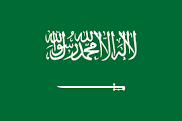
Brazil
Brazil is massive.
Coffee industry in Brazil is massive, producing more coffee than any other country in the world. With vast landscapes, diverse microclimates, and a deeply embedded coffee culture, Brazil offers a wide spectrum of coffee profiles. Ranging from rich, chocolatey, and nutty. To bright, fruit forward and complex.
But, beyond volume, Brazil is a country of coffee innovation and research. Continuously pushing the boundaries of what's possible in coffee quality, processing, and agronomy.
COFFEE PROFILE
Growing Regions
1. State of Minas Gerais - Heart of Brazilian coffee production. Home for areas like Sul de Minas, Cerrado Mineiro, and Chapada de Minas.
2. State of Sao Paulo - The historic coffee hub of Brazil, dating back to the early days of coffee cultivation in Brazil. The first coffee economy in Brazil sprouted near Sao Paulo in the Santos coffee zone. Coffe region such as Mogiana, Alta Mogiana, and Ourinhos.
3. Espirito Santo - Espirito Santo stands out for high altitude arabica with bright acidity, and floral aromatics as well as Conillon from Capixaba.
4. Bahia grows high quality arabica with the key regions such as Chapada Diamantina and Cerrado Bahiano.
5. Parana - Historically, Parana was once Brazil largest coffee producing state until devastating frosts in the 1970s drastically reduced its output. Today, despite its smaller production, Parana continues to grow high quality arabica from the higher altitude and cooler climate.
Common Varieties - Bourbon (including Yellow Bourbon), Mundo Novo, Catuai, Arara, and Obata.
Processing Methods - Pulped Natural, Natural, Washed (less common)
Bag Size - 59–60 kg
Traditionally, Brazil used 60kg jute bags as the standard for the green coffee exports, similar to many other coffee producing countries. This size remains common in international trade and is still used by many exporters.
However, in recent years Brazil shifted to using 59kg bags for official exports, especially under the Brazilian Coffee Exporter's Council (Cecafe) regulations. While the 1kg difference per bag may seem minor, it can add up significantly in large shipment affecting logistics and cost calculations for buyers.
Harvest Period - April–September, October–December (Espírito Santo)
Typical Arrival - October–January, February–March (Espírito Santo)
Brazil is massive.
Coffee industry in Brazil is massive, producing more coffee than any other country in the world. With vast landscapes, diverse microclimates, and a deeply embedded coffee culture, Brazil offers a wide spectrum of coffee profiles. Ranging from rich, chocolatey, and nutty. To bright, fruit forward and complex.
But, beyond volume, Brazil is a country of coffee innovation and research. Continuously pushing the boundaries of what's possible in coffee quality, processing, and agronomy.
COFFEE PROFILE
Growing Regions
1. State of Minas Gerais - Heart of Brazilian coffee production. Home for areas like Sul de Minas, Cerrado Mineiro, and Chapada de Minas.
2. State of Sao Paulo - The historic coffee hub of Brazil, dating back to the early days of coffee cultivation in Brazil. The first coffee economy in Brazil sprouted near Sao Paulo in the Santos coffee zone. Coffe region such as Mogiana, Alta Mogiana, and Ourinhos.
3. Espirito Santo - Espirito Santo stands out for high altitude arabica with bright acidity, and floral aromatics as well as Conillon from Capixaba.
4. Bahia grows high quality arabica with the key regions such as Chapada Diamantina and Cerrado Bahiano.
5. Parana - Historically, Parana was once Brazil largest coffee producing state until devastating frosts in the 1970s drastically reduced its output. Today, despite its smaller production, Parana continues to grow high quality arabica from the higher altitude and cooler climate.
Common Varieties - Bourbon (including Yellow Bourbon), Mundo Novo, Catuai, Arara, and Obata.
Processing Methods - Pulped Natural, Natural, Washed (less common)
Bag Size - 59–60 kg
Traditionally, Brazil used 60kg jute bags as the standard for the green coffee exports, similar to many other coffee producing countries. This size remains common in international trade and is still used by many exporters.
However, in recent years Brazil shifted to using 59kg bags for official exports, especially under the Brazilian Coffee Exporter's Council (Cecafe) regulations. While the 1kg difference per bag may seem minor, it can add up significantly in large shipment affecting logistics and cost calculations for buyers.
Harvest Period - April–September, October–December (Espírito Santo)
Typical Arrival - October–January, February–March (Espírito Santo)






